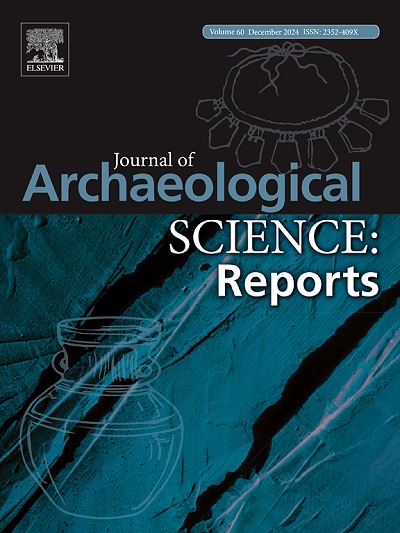看不见的破坏?确定耶路撒冷铁器时代建筑被火破坏的微观证据
IF 1.5
2区 历史学
0 ARCHAEOLOGY
引用次数: 0
摘要
在古代黎凡特南部,对破坏层的识别传统上主要集中在崩塌、原位陶器组合和火灾标志等可见指标上。然而,微观标准可以在没有保存可见证据的情况下提供对过去破坏事件的洞察,并提高我们重建它们的能力。铁器时代末期巴比伦人对耶路撒冷的毁灭被认为是该地区历史上的一个关键事件。U区出土了三座可追溯到这一时期的建筑,位于城市东南山脊的古代核心。然而,在这些挖掘的房间中,只有一个房间显示出明显的破坏层。本文分析了来自这个房间和另一个房间的微观考古证据,这些证据没有显示出明显的火灾破坏迹象。分析显示,这两个房间在破坏过程中都暴露在火灾引起的低水平辐射热下,并通过自然侵蚀而开放腐烂。这项研究的结果表明,通过仔细检查与宏观背景相关的微观标记,我们可以识别在挖掘过程中没有明确标记的结构中的火灾破坏。除了寻找可见的破坏迹象外,还应综合分析这些“看不见的”标记,以更准确地重建遗址的历史。本文章由计算机程序翻译,如有差异,请以英文原文为准。
Invisible destruction? Identifying microscopic evidence of destruction by fire in iron age structures in Jerusalem
The identification of destruction layers in the ancient southern Levant has traditionally focused on visible indicators like collapse, in situ pottery assemblages, and fire markers. However, microscopic criteria can provide insight into past destruction events when visible evidence has not been preserved and improve our ability to reconstruct them. The Babylonian destruction of Jerusalem at the end of the Iron Age is considered a key event in the region’s history. Three structures dated to this period were excavated in Area U, at the city’s ancient core on the southeastern ridge. However, only one room among those excavated showed a clear destruction layer. This paper analyzes the micro-archaeological evidence from this room and from another room that showed no clear indication of destruction by fire. The analysis revealed that both rooms were exposed to low levels of radiated heat caused by fire during the destruction and were left open to decay through natural erosion. The results of this study indicate that by carefully examining the microscopic markers in relation to the macroscopic context, we may identify destruction by fire in structures where no clear markers were identifiable during the excavation. In addition to searching for visible signs of destruction, the analysis of these “invisible” markers should be integrated to achieve a more accurate reconstruction of the site’s history.
求助全文
通过发布文献求助,成功后即可免费获取论文全文。
去求助
来源期刊

Journal of Archaeological Science-Reports
ARCHAEOLOGY-
CiteScore
3.10
自引率
12.50%
发文量
405
期刊介绍:
Journal of Archaeological Science: Reports is aimed at archaeologists and scientists engaged with the application of scientific techniques and methodologies to all areas of archaeology. The journal focuses on the results of the application of scientific methods to archaeological problems and debates. It will provide a forum for reviews and scientific debate of issues in scientific archaeology and their impact in the wider subject. Journal of Archaeological Science: Reports will publish papers of excellent archaeological science, with regional or wider interest. This will include case studies, reviews and short papers where an established scientific technique sheds light on archaeological questions and debates.
 求助内容:
求助内容: 应助结果提醒方式:
应助结果提醒方式:


